Living off-grid in Alaska is a journey of transformation, requiring a deep commitment to learning, adaptability, and resilience. It’s not just about fleeing civilization; it’s about crafting a life that aligns with our values, becoming active participants in our own survival. This journey is not just about surviving; it’s about thriving.
- Homesteading is about embracing self-reliance and resilience, about learning from the land and finding harmony in the rhythm of nature.
- Every piece of land has its unique features and challenges. The key is to understand these elements and work with them, not against them.
- Living off-grid in Alaska is not without its challenges. However, the beauty of homesteading is that it’s about embracing the journey of self-sufficiency.
Living Off the Grid in Alaska: A Guide to Homesteading and Self-Sufficiency
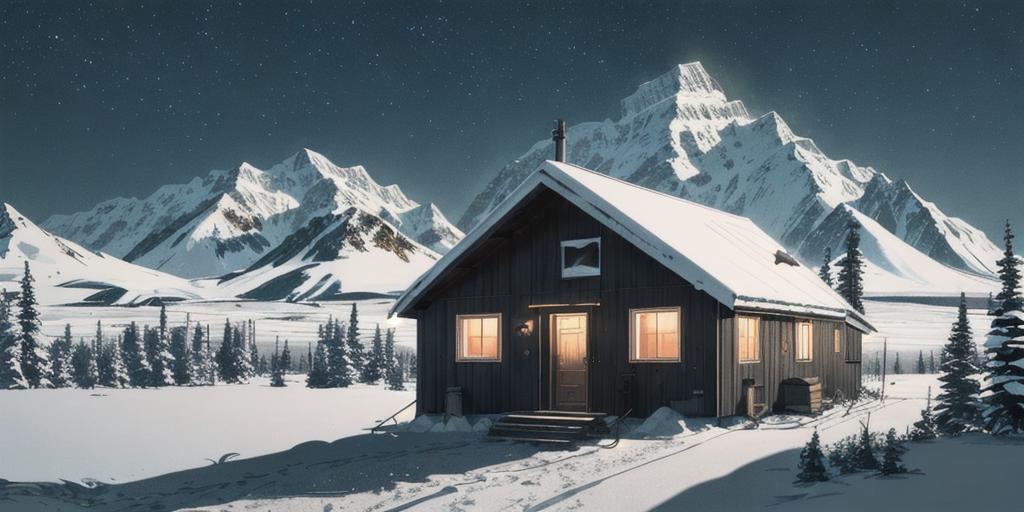
Embracing the Homesteading Mentality
Living off-grid in Alaska is as much a paradigm shift as it is a lifestyle change; it’s about embracing self-reliance and resilience, about learning from the land and finding harmony in the rhythm of nature. It’s about the homesteading mentality. Homesteading isn’t about fleeing from civilization; it’s about finding a deeper connection to the world around us, about crafting a life that aligns with our values, and about becoming active participants in our own survival.
As the dictionary definition of homesteading suggests, it’s simply about a dwelling and its land where a family makes its home. But, in reality, there is a profound richness to this straightforward definition. Homesteading is a transformational journey that requires a deep commitment to learning, adaptability, and resilience.
Choosing and Building Your Homestead
When it comes to choosing your land for homesteading in Alaska, it’s essential to remember that every piece of land has its unique features and challenges. The key is to understand these elements and work with them, not against them. It’s about adapting to the land and learning to thrive within its unique characteristics. Alaska’s harsh weather can indeed be challenging, but with the right approach, it can also be an empowering and rewarding experience.
Building your home is another critical part of the homesteading journey. But remember, it’s not just about constructing a shelter; it’s about creating a sustainable and self-sufficient living space. Whether it’s using shipping containers, as Marty Raney suggests, or crafting a log cabin, the key is to use resources wisely and plan for sustainability.
Preparing for Challenges and Embracing Self-Sufficiency
Living off-grid in Alaska is not without its challenges. From securing a clean water source to setting up an energy system, from gardening in the harsh climate to raising livestock, each task requires a substantial amount of planning and learning.
However, the beauty of homesteading is that it’s not about achieving perfection; it’s about embracing the journey of self-sufficiency. It’s about learning from our mistakes, adapting to changes, and finding joy in the process. This journey is not just about surviving; it’s about thriving.
So, if you’re considering this incredible journey of living off-grid in Alaska, remember that the homesteading lifestyle is more than just a retreat from the hustle and bustle of urban life. It’s a bold step towards self-reliance, resilience, and a deep connection with nature. It’s a lifestyle that’s challenging, rewarding, and, above all, profoundly transformational.
Top 5 States with the Best Laws for Off-Grid Living
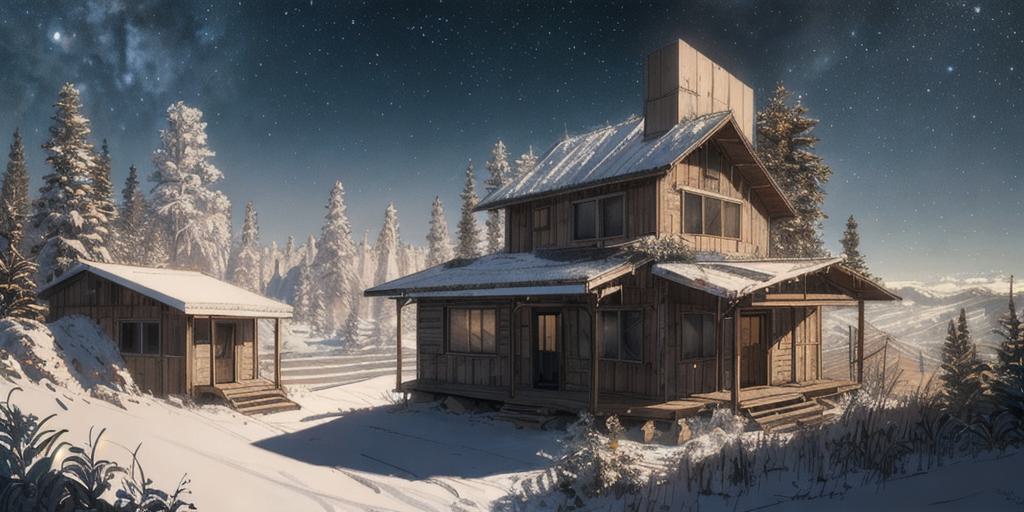
1. Kentucky: The Mid-South Homesteading Haven
Think of Kentucky, and you might conjure images of rolling bluegrass hills and bourbon barrels. But did you know this Mid-South state is a haven for off-grid living? With a reasonable cost of living and a climate that excludes extreme hot or cold days, it’s an inviting landscape for those seeking to break free from the urban grind. According to LawnStarter’s report, Kentucky ranks high across all categories of off-grid feasibility, infrastructure, climate, cost, and safety. So whether you’re planning to grow your own food or harness the power of wind, Kentucky has got you covered.
2. Minnesota: Great Lakes, Great Off-Grid Opportunities
Minnesota, the land of 10,000 lakes, scores high in infrastructure categories such as road quality and potential for wind power. Its laws are friendly to off-grid living, making it a top choice for those seeking a self-reliant lifestyle. Yes, the Upper Midwest can be chilly, but remember, it’s easier to warm an off-grid home than to cool one down. Let’s not forget the abundance of lakes which can provide not only a reliable water source but also a bounty of fish, becoming a sustainable food source.
3. Tennessee: A State of Low Costs and High Potential
Tennessee proves itself as an attractive option for off-grid living when it comes to land cost and living expenses. As highlighted by Homestead Survival Site, Tennessee offers fertile land for agricultural activities and a climate that experiences all four seasons. It’s a state that encourages a self-reliant lifestyle, making it a top contender for those looking to escape the 9-5 grind.
4. Texas: A Big State with Bigger Opportunities
Everything’s bigger in Texas, including the opportunities for off-grid living. This vast state offers a variety of environments, from coastal plains to expansive deserts, providing a backdrop for almost any type of off-grid lifestyle. Texas also has a reputation for lax building codes and land use regulations, making it easier for off-grid living enthusiasts to establish their homestead. As one Texas resident describes, the key to thriving here is preparedness and a strong community.
5. Alaska: The Last Frontier for Off-Grid Living
Alaska, the largest and most sparsely populated U.S. state, is often dubbed the ‘final frontier’ for off-grid living. Its vast wilderness, abundant wildlife, and isolation make it an appealing choice for those seeking a deep connection with nature. However, living off-grid in Alaska is not for the faint-hearted. The severe weather, access to resources, and physical isolation present unique challenges. But, for those willing to embrace these challenges, living off-grid in Alaska can be an empowering and rewarding experience.
The Pros and Cons of Living Off the Grid in Hawaii

The Financial Reality of Hawaiian Off-Grid Living
Picture this: you’re on an island, surrounded by the infinite blue of the Pacific, living off the land and sea without the constraints of a 9-5 job. It’s a dream, right? Well, it’s also the reality for those who choose to live off the grid in Hawaii. However, such a lifestyle doesn’t come without a significant investment. You’ll need serious equipment – solar panels, wind turbines, and more. But let’s not forget about the unpredictable weather conditions that can turn paradise into a survivalist’s nightmare, requiring you to budget for repairs and replacements throughout the year. As highlighted by Haleakala Solar, living off-grid in Hawaii can be a costly venture.
Off-Grid Opportunities in Hawaii
But don’t let the financial implications scare you away. Living off-grid in Hawaii also presents unique opportunities. With a high cost of living in the state, going off-grid can potentially reduce expenses like rent and groceries. Plus, when you’re not tethered to the mainland’s traditional job market, you might find yourself with more time to explore creative projects or even start a business as a tour guide or private contractor. This slower pace of life, coupled with the breathtaking natural beauty of the islands, can offer an unrivaled sense of peace and fulfillment.
The Challenges of Island Living
Before you start packing your bags, it’s crucial to consider the challenges of living off-grid in Hawaii. The islands’ inherent isolation makes them vulnerable to unforeseen situations that require evacuation or immediate repairs. The constant uncertainty of weather patterns can become a source of constant stress. As PreppGroup points out, in a disaster scenario, Hawaii’s isolation could make it one of the worst places to be in the U.S.
In conclusion, choosing to live off-grid in Hawaii is a decision that should not be taken lightly. While the islands offer a unique blend of natural beauty, a slower pace of life, and potential financial independence, they also present significant challenges. But for those willing to embrace these challenges, the rewards can be immeasurable.
Off-Grid Living in the South: A Guide to Sustainable Living in the Southeastern United States
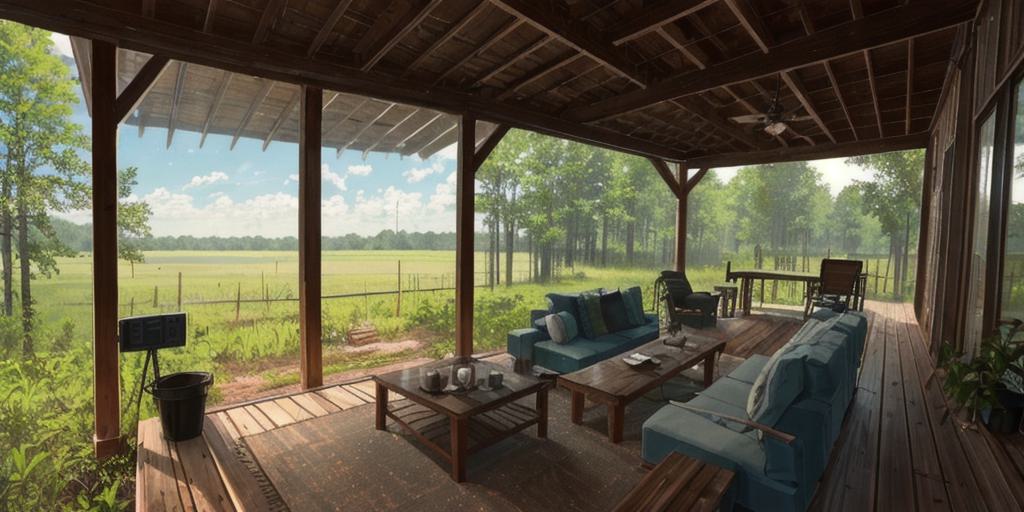
Embracing the Verdant Freedom: Southeastern U.S.
Picture this: you’re nestled amidst the sprawling wilderness, your feet touching the soil that you own, the foliage whispering ancient secrets, and the wind carrying the scent of freedom. Welcome to the Southeastern United States, a region that welcomes the audacious, the ones who dare to defy the mundane and embrace an existence that is as real as the earth beneath their feet.
The Ecological Canvas: Potential Resources
As you walk through the dense woods, you can see the native trees standing tall and proud, their leaves rustling like a symphony of nature. Each tree is a potential resource, a key to sustainable off-grid living. The Southeastern U.S., with its rich biodiversity, offers a buffet of resources for those willing to learn and adapt. From the sturdy oak offering timber to the sweet bay magnolia with its edible fruits, nature here is not just a spectacle, but a provider.
Moreover, embracing the local flora, you contribute to the preservation of native species. Think about it, your off-grid initiative could become a conservation effort, a stand against the continuous encroachment of introduced species.
A Region of Opportunities: Prospects and Potential
The Southeastern U.S. is not just a haven for nature enthusiasts but also a land of opportunities. You could harness solar power, given the region’s generous sunshine, or build a wind turbine to capture the energy of the coastal winds. The fertile soil is perfect for a lush vegetable garden, and the abundant rivers and streams could provide fresh water and fish.
Moreover, the internet can be your gateway to the world. You could start an online business, offer consultancy services, or simply document your off-grid journey, inspiring others while generating an income. The possibilities are as vast as the open skies of the Southeast.
Living off-grid in the Southeastern U.S. is not merely about surviving; it’s about thriving. It’s about creating a lifestyle that respects and utilizes nature without harming it, a lifestyle that values the intangible over the material. It’s about finding a real, deep connection with the earth, and in the process, finding yourself.
So, do you dare to step off the beaten path? Do you dare to listen to the whispers of the wild? Remember, the Southeastern U.S. doesn’t just offer land; it offers a lifestyle, a philosophy, a chance to redefine the way we live.
The Future of Off-Grid Living: How Technology is Changing the Game

Harvesting the Sun: Solar Power as an Off-Grid Game Changer
Imagine, if you will, the sun not just as a celestial body that brightens our day, but as a personal powerhouse that fuels your off-grid lifestyle. Welcome to the era of solar power, a game-changing technology that’s not just about harnessing energy, but about redefining our relationship with nature. Renewable, abundant, and increasingly affordable, solar power has made living off-grid not just viable, but also sustainable and even profitable, as demonstrated by Joseph Evans, who turned his annual electricity bill into a revenue stream by selling excess power back to the grid.
Life Beyond Brick and Mortar: Insulated Foundations
Shelter is a fundamental human need, but traditional construction methods often fail to meet the demands of off-grid living. Enter insulated foundations, a revolution in building design that optimizes energy efficiency. By insulating the areas that leak heat and cold, these foundations create a thermos-like structure that keeps your home’s internal temperature more constant, reducing your reliance on external energy sources and slashing utility bills. These game-changing foundations are a testament to human ingenuity, proving that we can live in harmony with nature without compromising on comfort.
Beyond the Power Grid: Vehicle-to-Grid Technology
The future of off-grid living isn’t just about adapting to nature; it’s about leveraging technology to make nature work for us. The advent of Vehicle-to-Grid (V2G) technology has transformed electric vehicles from mere transportation devices into mobile power stations. As seen in the case of winemaker Joseph Evans, the energy stored in an electric vehicle can power a property, and the excess can even be sold back to the grid. With this innovative technology, your vehicle becomes more than just a means of transportation; it becomes a key player in your off-grid lifestyle, contributing to both your energy and financial independence.
As we stand on the cusp of a new era, it’s clear that the future of off-grid living is not about turning our backs on technology, but about integrating it into our pursuit of a lifestyle that is closer to nature, more self-reliant, and more sustainable. The road may be less traveled, but with the right tools and mindset, it’s a journey that’s well within our reach.
Living Off the Grid in the Midwest: A Guide to Homesteading and Self-Sufficiency in the Heartland
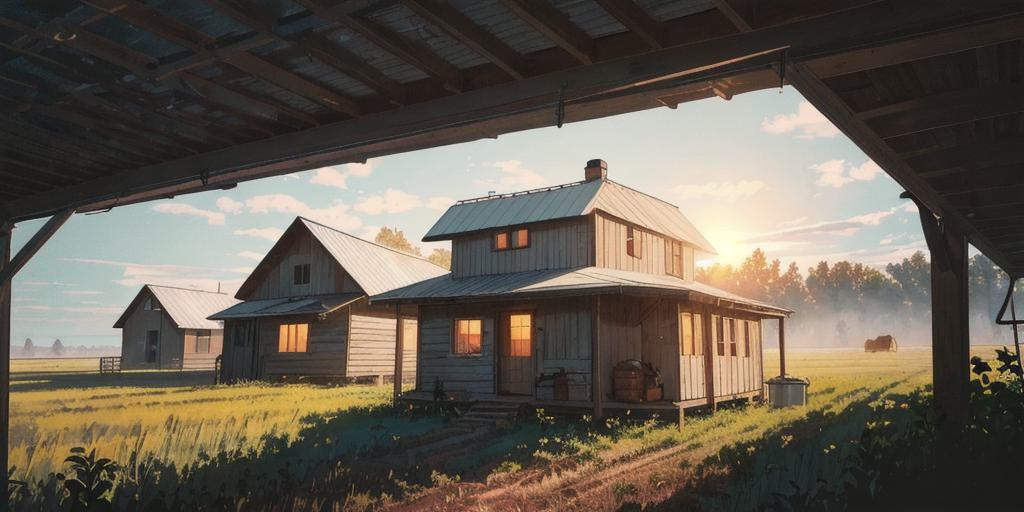
Embracing the Soil: Building Self-Sufficiency through Permaculture
Embarking on the journey of off-grid living means more than just generating your own energy. It also means embracing the soil beneath your feet, tapping into the cycle of life and death that has sustained our species for millennia. The philosophy of permaculture is a comprehensive framework that allows you to weave your lifestyle around the rhythms of nature, promoting biodiversity and delivering a bounty of fresh, organic produce right at your doorstep. It’s as much about cultivating a mindset of abundance as it is about cultivating your garden.
Permaculture is not merely a gardening technique; it is an integrated life-approach that turns conventional wisdom on its head. It’s about thinking in cycles rather than straight lines, observing and emulating nature rather than trying to conquer it. It’s about growing ‘up’ and ‘down’ and not just ‘across,’ about seeing waste as resource, and about understanding that the health of the soil is the health of the entire ecosystem, including us. With permaculture, you begin to work with nature, not against it, and the rewards are manifold: healthier, more nutrient-dense food, a more resilient local ecosystem, and a deeper connection with the land that sustains you.
Woven in the Web of Life: Creating a Sustainable Ecosystem
Off-grid living is not just about self-sufficiency, but also about sustainability. As we move away from the linear, extractive model of the industrial era, we begin to see ourselves as part of a larger ecosystem. In this web of life, every creature, every organism has a role to play, including us. By creating habitats for diverse species, by recycling our waste into nutrients, by conserving water and fostering soil health, we can make our homesteads not just sustainable, but regenerative.
Bees, worms, birds, insects – all play a vital role in this system. Each organism is a cog in the wheel of life, contributing to the overall health and vibrancy of the ecosystem. By creating habitats for these creatures, you are investing in your own future. You’re promoting pollination, enhancing soil fertility, controlling pests, and fostering a more resilient, more productive homestead.
The Digital Nomad: Bridging the Gap between Nature and Technology
Living off-grid doesn’t mean disconnecting from the world. On the contrary, it’s about establishing a more balanced, more sustainable relationship with our planet while remaining connected with the world at large. Thanks to the internet, we are now able to live closer to nature without sacrificing our access to information, communication, and opportunities.
As a digital nomad, you can work from anywhere, anytime, thanks to the leaps and bounds of technology. Online platforms offer countless ways to generate income while living off the grid. Whether you choose to freelance, run an online business, or simply invest in digital assets, the internet gives you the freedom to live a life closer to nature without compromising your livelihood. The future of off-grid living is here, and it’s more liberating than you could ever imagine.
The Legal Aspects of Off-Grid Living: Understanding Zoning Laws and Property Rights
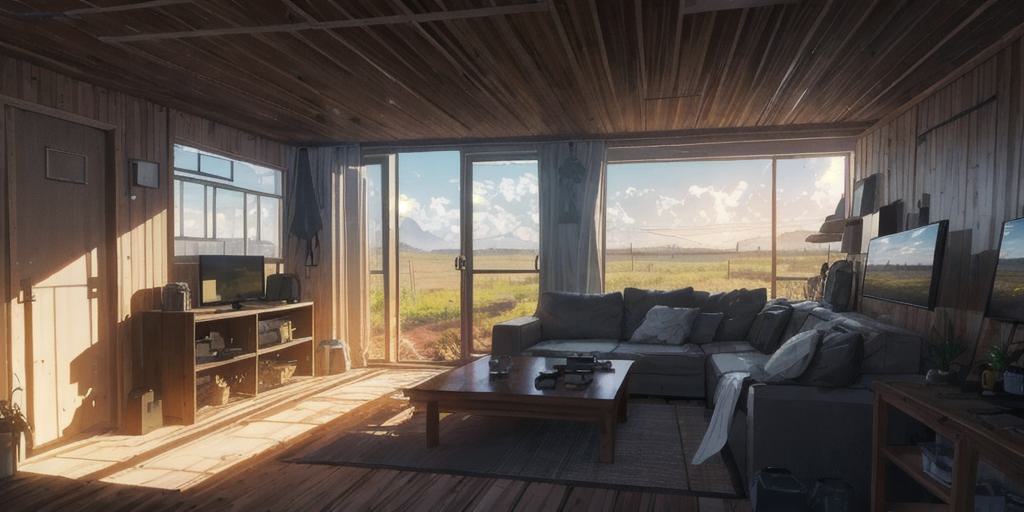
Navigating the Terrain: Grasping the Intricacies of Zoning Laws
Retreating from the urban sprawl to a life of simplicity and serenity in the heart of nature may seem like a beautiful dream. Yet, realizing this dream requires more than a parcel of land and a sturdy yurt. It requires a keen understanding of zoning laws, local regulations, and property rights. These intricate, often bewildering, rules and regulations are the latticework on which your off-grid dream abode will be built.
Just like the diverse ecosystems that populate our planet, zoning laws and regulations differ vastly from state to state, and even from county to county. In some places, you’re free to build your dream cabin in the woods, while in others, you’re restricted by stringent building codes and zoning laws. You might be permitted to set up a solar array in one county but be restricted in the next. The legal landscape can be as diverse and complex as the natural one.
As consultants in the Dão region have learned, navigating this terrain takes time, patience, and a network of knowledgeable individuals. It’s about understanding the potential and the challenges that someone new to a region might not foresee. It’s about providing an honest, no-nonsense overview of what a property might require beyond the purchase.
Carving Your Niche: Understanding Property Rights
Property rights are another facet of the legal landscape that prospective off-gridders need to understand. Just as every organism in an ecosystem has a niche, every property owner has certain rights and responsibilities. These rights often pertain to how you can use the land, what you can build on it, and how you can access resources like water and timber.
For instance, do you have the right to drill a well on your property, or are water rights separate from land ownership? Can you harvest timber from your land for building or heating, or are there restrictions in place to protect local ecosystems? Understanding your property rights is crucial to shaping your off-grid lifestyle around the laws of the land.
Embracing Autonomy: Utility Independence and Building Regulations
Moving off-grid is a declaration of independence. It’s about severing the ties to the centralized utilities that most of us take for granted. But here too, legalities come into play. Each jurisdiction has its own regulations concerning utility independence, particularly when it comes to water supply, waste disposal, and energy generation.
Building regulations are another hurdle that prospective off-gridders need to clear. Some jurisdictions have minimum size requirements for dwellings, which can pose a challenge for those dreaming of a tiny home in the woods. Others have rules concerning the types of materials and construction methods that can be used, which may put a damper on those planning to build an unconventional abode.
Yet within these constraints, there’s room for creativity and innovation. There’s a sense of liberation in generating your own electricity from the sun, catching rainwater from the sky, or composting your waste into fertile soil. It’s about embracing autonomy, not just from the grid, but from a system that often prioritizes convenience over sustainability.
Living Off the Grid in the Rocky Mountains: A Guide to Homesteading and Self-Sufficiency in the Western United States
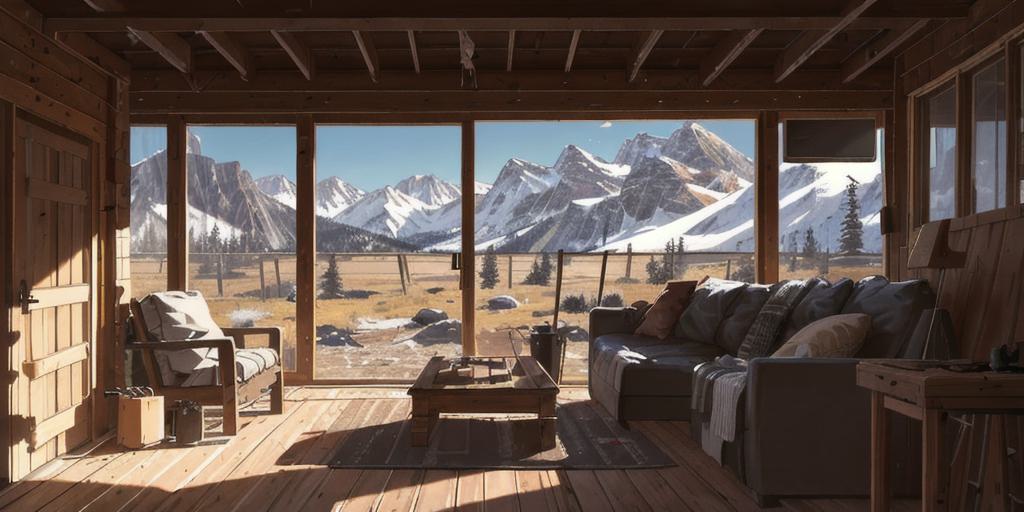
The Call of the Wild: Unleashing Your Inner Pioneer
The Rocky Mountains, with their majestic peaks and sprawling, untouched wilderness, beckon the modern-day pioneers among us. Those of us who yearn for a connection that reaches beyond the digital sphere and into the raw, earthy core of existence itself. For those bold enough to answer this call, there’s a world of self-reliance and freedom waiting to be explored.
Living off-grid in the Western United States isn’t about rejecting civilization or stepping back in time. Instead, it’s about embracing a lifestyle that honors the rhythms of nature and the human spirit’s innate drive for autonomy. It’s about stepping off the treadmill of consumer culture and stepping into a life that’s measured by the rising of the sun, the changing of the seasons, and the growth of your garden.
The Tapestry of Life: Cultivating Your Food and Nourishing Your Soul
One of the most rewarding aspects of living off-grid is the opportunity to cultivate your own food. When you plant seeds in the soil, nurture them with water and sunlight, and watch them grow into nourishing sustenance, you engage in a dance as old as humanity itself. It’s a dance that nourishes not just your body, but your soul.
Yet, much like zoning laws and property rights, the art of homesteading comes with its own set of challenges. From understanding the intricacies of permaculture design to maintaining a healthy soil ecosystem, there’s a wealth of knowledge to be discovered. But the rewards, in the form of fresh, homegrown produce and a profound connection to the Earth, are well worth the effort.
The Siren Song of Solitude: Thriving in the Silence and the Storms
Living off-grid in the Rocky Mountains isn’t for the faint of heart. The winters are long and harsh, and the isolation can be both a blissful escape and a daunting challenge. But for those who heed the siren song of solitude, the rewards are immeasurable.
Imagine waking up to the sound of wind rustling through the pines, instead of the blaring of an alarm clock. Imagine spending your days tending your garden, hiking in the hills, or simply basking in the silent majesty of your mountain abode. Imagine the thrill of weathering a storm, knowing that you’ve built your home and your life to withstand the forces of nature.
Yes, living off-grid requires effort, patience, and resilience. But it’s also an invitation to live a life of purpose, simplicity, and deep connection. Whether you’re drawn by the promise of self-reliance, the beauty of the natural world, or the allure of a slower, more mindful lifestyle, the Rocky Mountains are waiting to welcome you home.
Off-Grid Living in California: A Guide to Sustainable Living in the Golden State
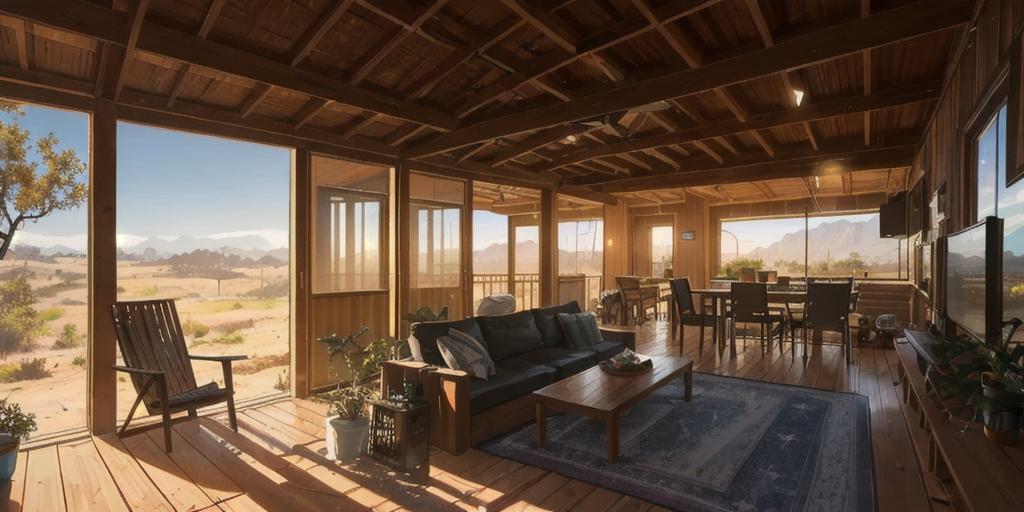
Harvesting the Power of the Sun and Wind: California’s Renewable Revolution
California is leading the charge when it comes to innovative renewable energy solutions, making it an enticing option for those desiring an off-grid lifestyle. Imagine the freedom of harnessing the power of the sun and wind, transforming it into your personal energy source. This isn’t just a pipe dream, but a reality unfolding right now in California.
One such initiative is the partnership between Southern California Gas and the University of California Irvine’s Advanced Power & Energy Program. Together, they aim to create an “Advanced Energy Community” in Huntington Beach, where solar and wind power facilities provide clean, renewable energy to the neighborhood. Instead of storing surplus power in batteries or molten salt, it’s utilized to produce hydrogen gas, a potential game-changer for long-term energy storage.[source]
Such groundbreaking efforts are making California a pioneering state for renewable energy, opening new possibilities for off-grid living.
Beyond your Backyard: Community-Scale Sustainability
Living off-grid in California doesn’t mean isolating yourself from the world. Instead, it opens up a unique opportunity to be part of a community that shares your commitment to sustainability and environmental stewardship. The Advanced Energy Community in Huntington Beach is a testament to this ethos, striving to reduce costs, emissions, and improve the quality of life for its residents.
By 2025, California is projected to have between 3,300 and 7,800 gigawatt-hours of excess solar and wind energy. This surplus power could heat up to 370,000 homes or provide electricity for up to 187,000 homes if converted to renewable natural gas.[source] This sets the stage for an energy-independent California, where off-grid living becomes not just a possibility but a sustainable and scalable reality.
Embracing the Off-Grid Lifestyle in California: Challenges and Triumphs
Living off-grid is not without its challenges, but for those who dare, it offers an unparalleled sense of freedom and fulfillment. It’s about embracing a lifestyle that aligns with nature’s rhythms and your own desire for autonomy. It’s about stepping off the consumerist treadmill and stepping into a life measured by the rising sun, the changing seasons, and the growth of your garden.
Whether you’re drawn to the promise of self-reliance, the beauty of the natural world, or the allure of a slower, more mindful lifestyle, California – with its innovative renewable energy projects and supportive off-grid communities – is a beckoning horizon. And with each sunrise, it’s a new day to live the dream of a sustainable, off-grid lifestyle.
The Benefits of Living Off the Grid: Improved Health, Financial Independence, and a Sustainable Lifestyle
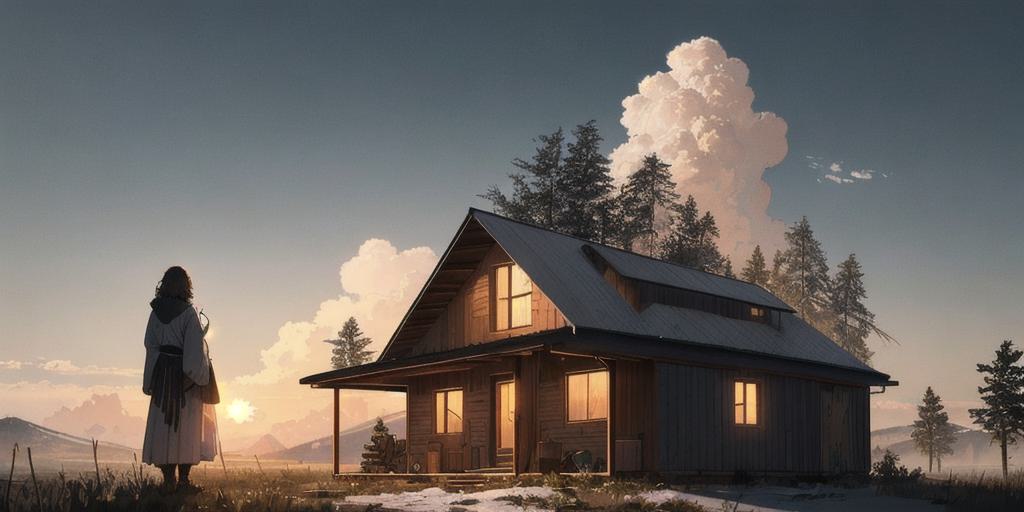
Enhanced Well-being: The Health Perks of Off-Grid Living
Living off the grid does more than just let you escape the 9-5 grind. It can be a catalyst for improved health and well-being. Often, this lifestyle includes growing your own food, reducing dependency on processed and pre-packaged meals. This cultivates healthier eating habits, leading to a noticeable boost in physical health. [source]
Moreover, the ‘back-to-basics’ approach to life can enhance mental health. The simplicity of living close to nature, coupled with the sense of accomplishment in being self-sufficient, can lead to reduced stress levels and an improved sense of well-being. This isn’t just a lifestyle; it’s a natural antidote to the modern world’s hustle and bustle.
The Road to Financial Freedom
Living off the grid is not just about survivalism or eco-consciousness; it’s a pathway to financial independence. By generating your own electricity, harvesting your own food, and minimizing your reliance on consumer goods, your monthly bills can dwindle to a fraction of what they once were. This reduction in living costs can free up funds to invest and grow, paving the way for a financially stable future. [source]
Moreover, the digital revolution has made it possible for many to work from anywhere, including your off-grid paradise. With the right planning, you can have the best of both worlds: a lifestyle rooted in nature, supported by the benefits of modern technology.
Harmony with Nature: A Sustainable Lifestyle
Living off the grid goes hand-in-hand with a sustainable lifestyle. By using renewable energy sources, practicing organic farming, and reducing waste, you’re not just surviving but thriving in harmony with the environment. This isn’t a fleeting trend; it’s a practical and meaningful response to the world’s growing environmental challenges. [source]
Moreover, this sustainable lifestyle can influence others around you, creating a ripple effect. As more people adopt these practices, we move closer towards a world where living in harmony with nature isn’t the exception, but the norm.
Before you embark on this journey, it’s important to remember that off-grid living isn’t a one-size-fits-all proposition. It requires careful planning, a willingness to learn new skills, and a commitment to adapt to the rhythms and challenges of nature. But for those who choose this path, the rewards go beyond mere survival. They offer a richer, healthier, and more sustainable way of life.
Embrace the Off-Grid Adventure: Self-Reliance, Sustainability, and Serenity
Off-grid living, whether nestled in the heart of Alaska or amidst the rugged terrain of the Rocky Mountains, is a journey of transformation. It’s a conscientious shift towards resilience, self-reliance, and a deeper connection with the world around us.
Homesteading is not merely a retreat from civilization, but a bold step towards learning, adaptability, and creating a life that aligns with our values. Each piece of land brings its unique features and challenges. Embracing these elements and working with them shapes our journey towards self-sufficiency.
Successful off-grid living is not only about survival but about thriving. It’s about seizing the opportunity to cultivate food and generate energy, to embrace the soil beneath our feet, and to be part of a community that shares a commitment to sustainability and environmental stewardship.
Living off-grid, though not without its challenges, rewards us with an unparalleled sense of freedom, fulfillment, and financial independence. It’s a lifestyle that provides a healthier way of living, reducing stress levels, and improving overall well-being. Furthermore, it’s a practical and meaningful response to the world’s growing environmental issues.
While legal landscapes, like zoning laws and property rights, can be as diverse and complex as the natural terrain, they can be navigated with the right information and support. With careful planning, a willingness to learn new skills, and a commitment to adapt, the off-grid lifestyle is attainable.
Whether you’re drawn by the promise of self-reliance, the allure of a slower, more mindful lifestyle, or the beauty of the natural world, the rewards go beyond mere survival. The off-grid lifestyle offers a richer, healthier, and sustainable way of life that enlightens the soul and nourishes the body.
So, are you ready to step off the beaten path? To live a life that values the intangible over the material? To answer the call of the wild and embrace your inner pioneer? Remember, off-grid living doesn’t just offer land; it offers a lifestyle, a philosophy, a chance to redefine the way we live.